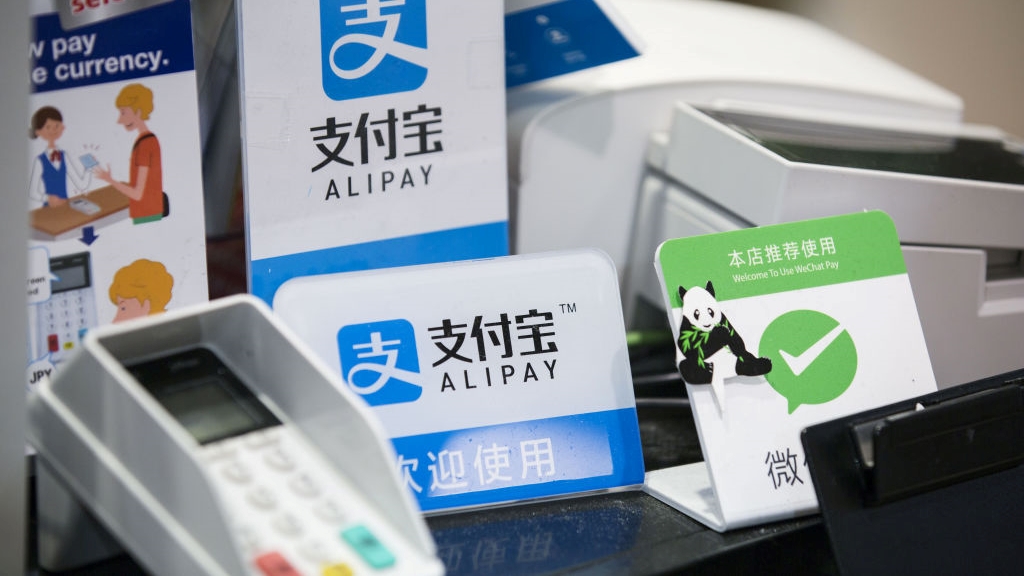China’s digital currency rollout could be a blueprint for the West
With China rolling out the digital yuan at the 2022 Beijing Winter Olympics, it’s the first major economy to launch a nationwide CBDC


This month, at the Beijing Winter Olympics, China is ready to showcase its digital yuan to the world, becoming the first major global economy to roll out a central bank digital currency (CBDC). From 4 February, overseas nationals will be able to convert foreign currencies into digital yuan, according to reports, and are given a physical card to use during their stay.
Centralised digital currencies are an emerging geopolitical trend and have risen in popularity in reaction to the swell in excitement for cryptocurrencies like Bitcoin. Several smaller states have already introduced their own CBDCs, such as Bahamas with the Sand Dollar and Cambodia with Bakong. Economic giants such as the US and UK, however, are lagging behind – despite expressing keen interest in pursuing CBDCs.

The digital yuan will face its greatest test yet at the 2022 Beijing Winter Olympics
The UK launched a taskforce in April 2021 to examine the viability of launching a CBDC, although the House of Lords stated last month there wasn’t a convincing case for one. Meanwhile, the US Federal Reserve’s January white paper highlighted the pros and cons but didn’t ultimately take a position. It preferred, instead, to leave the decision to a divided Congress. Effectively, a digital dollar is some years away.
China, meanwhile, has been exploring digital currencies since 2014 and has ran several trials of its Digital Currency Electronic Payment (DC/EP) – the formal name for the digital yuan. It’s also given away millions of dollars of the digital currency in trials across several Chinese cities including Shenzhen, Chengdu, and Suzhou. In these trials, local government bodies distributed yuan through a lottery, and users had to download an app to receive it.
With the world’s major economies dithering, central banks and policymakers may now look to China, and its digital yuan, as the definitive blueprint for CBDCs.
What is a central bank digital currency (CBDC)?
The first thing to bear in mind is CBDCs are a form of fiat currency digital asset, while Bitcoin is a digital token created with cryptographic tools, says Anton Chashchin, managing partner of Bitfrost.io. He underlines one of the fundamental characteristics of cryptocurrencies is their decentralisation; with transactions recorded and anonymous on the blockchain, they operate outside the control of a central authority.
Get the ITPro daily newsletter
Sign up today and you will receive a free copy of our Future Focus 2025 report - the leading guidance on AI, cybersecurity and other IT challenges as per 700+ senior executives
“It’s reasonable to take the view that any government-backed coin nullifies this premise and may even centralise cryptocurrencies,” says Chashchin. Unlike cryptocurrencies, like Bitcoin, the digital yuan isn’t blockchain-based, although it does allow transactions to be verified without the need for banks. With the digital yuan still in its infancy, though, Chashchin thinks it’s possible China might reconsider this stance and switch to blockchain in the future.
The expansion of interest around CBDCs coincides with a wider clampdown on blockchain-based cryptocurrencies. In India, for example, the government is developing a digital rupee while imposing a 30% tax on income from digital assets. In May 2021, China also signalled a deeper push against cryptocurrencies, targeting cryptocurrency mining as well as exchange platforms. The government also brought in measures banning banks and financial institutions from providing cryptocurrency-related services.
Chashchin explains cryptocurrencies uniquely limit central bank control over the flow of funds. To reduce competition for a convenient, regulated, and controlled digital yuan, he adds, it was sensible to ban cryptocurrencies.“Even if the reason for the cryptocurrency ban is different, by blocking cryptocurrencies, China has strongly fenced itself off from all the available opportunities for the infrastructure of the crypto world, just as other countries begin to launch into the space and explore the benefits of this technology,” he says. It’s possible China will bring back cryptocurrencies, but only after fully implementing the digital yuan and forming a basis of the mechanism for its control.
Centralised currency, centralised power
That CBDCs are controlled centrally evokes the stark policy differences between the US and China, with Chashchin quashing hopes as to whether Western nations can learn from China, and vice versa. This is because each has different financial systems, built up over decades, meaning they’ll have to approach CBDCs differently based on their legal frameworks.
The digital yuan is part of the reorientation of the Chinese payment system away from private tech firms and back towards a combination of government and banks, says Aaron Klein, senior fellow at the Brookings Institution.
This means it doesn’t hope to export Chinese-based digital wallets like Alipay and WeChat Pay in the hopes of becoming as ubiquitous as the Visa, MasterCard and American Express networks are. Instead, there’s a desire to reorient the internal Chinese system to be focused on a central bank digital currency run through digital wallets more directly tied to the Chinese banking system, explains Klein.
RELATED RESOURCE

“I think the digital yuan will be integrated into the AliPay and WeChat payment systems so consumers and businesses still settle on those tech rails, but settle with government money,” he predicts.
He doesn’t think, though, that China’s experience has much at all in common with the US. Klein believes the US has had a very long history of running on a form of ‘CBDC’, the difference being the first ‘C’ stands for commercial instead of central. Commercial bank digital currency is what is used with debit and credit cards, he says. “We have a system that is very wealthy and rewarding for rich consumers who earn large, tax-free subsidies through the array of platinum, sapphire, and other rewards cards,” outlines Klein.
Right on the money
There are four key motivations behind the digital yuan, says Meng Liu, a Forrester analyst. China is aiming to defend the yuan’s sovereign position against cryptocurrencies and break the dominance of tech giants like Alibaba and Tencent over consumer data. It’s also looking to expand financial inclusion and accelerate the yuan’s internationalisation.
Contrary to the perspectives of Chashchin and Klein, Liu believes Western powers should watch this implementation closely. “The US can learn from China about how to design and implement a retail CBDC and take the lessons from the failures and successes of the digital yuan's implementation in the real world,” he says. Although the gulf in terms of policy and financial systems is hard to ignore, the US could learn how to encourage citizens to develop and try any CBDC it develops by implementing some of China’s techniques. For example, it wouldn’t have to rely on trial-and-error test cases if it studies the results of various Chinese experiments. This could speed up rollout.

Klein predicts the digital yuan will be integrated into existing digital payment systems like AliPay and WeChat Pay
Failing to accelerate plans, however, could see the US fall behind. The Federal Reserve recently warned the advent of digital coins in other countries could lead to a reduction in the use of the US dollar, if they’re deemed more attractive. Liu explains that while China’s economy is already the world’s second largest, the yuan only accounts for around 2% of global foreign exchange reserve assets. Efforts to internationalise the yuan over the past decade have had limited success, as China strictly controls capital outflows.
“Although the digital yuan may not solve all of these issues, its digital, programmable, and loosely coupled nature will enable more efficient monitoring of capital flows, which might lead to easing of capital control,” he underlines.
Testing the digital yuan in cross-border payment scenarios, like the recent 'm-CBDC Bridge' project with regulators from Hong Kong, Thailand, and the United Arab Emirates, shows China’s ambition to drive the use of its digital currency in global transactions. It also illustrates how it aims to set a new standard for CBDCs, which could accelerate the yuan’s internationalisation. These steps would certainly boost the yuan’s circulation in global trade. He doesn’t think, though, this will be enough for the yuan to become the world’s reserve currency. This, he counters, would depend on various additional factors including a country's strength in the global economy, technological might, military powers, among others.
As China continues its experiment, alarm bells ring dimly in Washington, as the potential for China’s CBDC to challenge the power of the dollar-based global financial network is scrutinised. More importantly, China is collaborating with other nations to develop new digital standards, and nations without cogent plans will have no voice at the table when it comes to shaping this technology.
Although China’s approach will vary from those of others’, due to differing legal and financial frameworks, the West may yet benefit from eagerly watching how the digital yuan fares as they formulate their own CBDC roadmaps. Policymakers, however, remain divided on this issue and it could take years to even decide whether a CBDC is necessary. Ultimately, the US dollar – backed by its security as the world’s reserve currency in combination with the long arm of the nation’s global military power – won’t feel threatened just yet.
Zach Marzouk is a former ITPro, CloudPro, and ChannelPro staff writer, covering topics like security, privacy, worker rights, and startups, primarily in the Asia Pacific and the US regions. Zach joined ITPro in 2017 where he was introduced to the world of B2B technology as a junior staff writer, before he returned to Argentina in 2018, working in communications and as a copywriter. In 2021, he made his way back to ITPro as a staff writer during the pandemic, before joining the world of freelance in 2022.
-
 Bigger salaries, more burnout: Is the CISO role in crisis?
Bigger salaries, more burnout: Is the CISO role in crisis?In-depth CISOs are more stressed than ever before – but why is this and what can be done?
By Kate O'Flaherty Published
-
 Cheap cyber crime kits can be bought on the dark web for less than $25
Cheap cyber crime kits can be bought on the dark web for less than $25News Research from NordVPN shows phishing kits are now widely available on the dark web and via messaging apps like Telegram, and are often selling for less than $25.
By Emma Woollacott Published